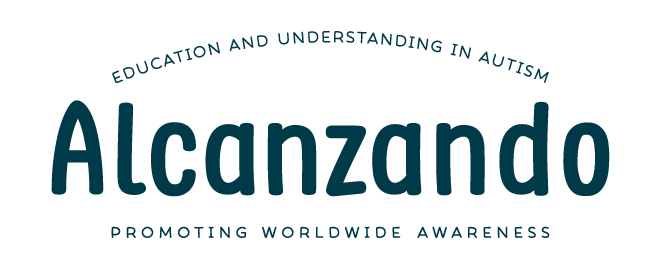
24 Nov Strengths-Based School Support: A Guide for Parents of Children with Disabilities
Navigating school life for a child with a disability can be challenging. However, more schools are embracing person-centered, strengths-based approaches that recognize and nurture each child’s unique abilities and potential. Parents and teachers can collaborate to create a supportive and enriching educational experience by focusing on strengths rather than deficits. Here are key ways families can work with schools to enhance their children’s educational journey.
Focus on Strength-Based Learning Plans
Children feel more confident and motivated when Individualized Education Plans (IEPs) emphasize strengths. An IEP can celebrate what your child excels in, beyond just addressing areas of struggle. For example, if your child has strong visual processing skills, request the use of visual aids—like charts, diagrams, or videos—to reinforce learning concepts. Research shows that nurturing a student’s natural abilities significantly improves their engagement and learning outcomes
How You Can Help: Advocate for IEP goals that build on your child’s strengths. During IEP meetings, emphasize what your child does well, whether it’s art, math, or a unique way of problem-solving. When teachers recognize these strengths, they can incorporate them into daily lessons, helping your child thrive in ways that are meaningful to them.
Create a Flexible Learning Environment
Traditional classrooms can overwhelm students with sensory sensitivities, leading to stress and disengagement. A flexible learning environment accommodates your child’s needs by offering sensory-friendly options, such as quiet areas or adjusted lighting. These modifications can reduce anxiety and create a comfortable learning atmosphere.
How You Can Help: Share your child’s sensory preferences with teachers and request a quiet or sensory-friendly space for breaks during the school day. Small adjustments can significantly help children feel calm and ready to learn.
Encourage Autonomy and Choice
Research shows that when students control their learning, they develop greater motivation and self-confidence. Allowing students to choose how to present projects—through writing, drawing, or creating videos—makes learning enjoyable.
How You Can Help: Work with teachers to offer your child choices in assignments. Let your child take the lead on projects that interest them. This freedom fosters independence, which can benefit them both academically and personally.
Foster Positive Peer Relationships
Developing social skills is crucial, but group activities can be stressful for children with disabilities. Schools that prioritize collaboration over competition help students form healthy relationships. Programs like peer mentorship or “buddy” systems encourage children to learn from and support each other positively.
How You Can Help: Encourage your child to participate in school activities or clubs that align with their interests. Socializing with classmates over shared hobbies can reduce social anxiety and create natural connections. Request that teachers consider peer mentorship opportunities, where your child can benefit from working alongside a supportive classmate.
Support Your Child’s Special Interests
Many children have specific interests and often become “experts” in topics they love, such as animals, trains, or space. Teachers can integrate these interests into lessons, making school more relevant and engaging for your child. Research shows that incorporating personal interests into learning enhances cognitive and emotional outcomes, as students feel more connected to what they’re learning.
How You Can Help: Share your child’s passions with their teachers. When educators understand what captivates your child, they can tailor lessons around these topics, making learning enjoyable and meaningful.
Advocate for Teacher Training on Neurodiversity
A significant shift in education involves understanding neurodiversity—recognizing and respecting neurological differences as natural human variations. By training teachers in neurodiversity-affirming practices, schools can foster inclusive learning environments that appreciate each student’s unique way of thinking. Educators trained in neurodiversity better recognize and celebrate strengths rather than focus solely on deficits.
How You Can Help: Advocate for teacher training in neurodiversity and strengths-based practices. Many schools welcome expanding these programs, especially when families request them. Participate in any parent-teacher workshops or events on this topic to strengthen this movement.
For families of children with disabilities, the school journey is made easier by support systems that emphasize strengths, offer flexibility, and encourage positive relationships. When families advocate for these practices and collaborate with teachers, they help create a nurturing environment where their children can flourish. Remember, your child’s unique strengths are their greatest asset, and with the right support, these strengths can be the key to a successful and fulfilling educational experience.
Source
Cherewick, M., Matergia, M. Neurodiversity in Practice: a Conceptual Model of Autistic Strengths and Potential Mechanisms of Change to Support Positive Mental Health and Wellbeing in Autistic Children and Adolescents. Adv Neurodev Disord 8, 408–422 (2024). https://doi.org/10.1007/s41252-023-00348-z
Weishaar, P. M. (2010). Twelve Ways to Incorporate Strengths-Based Planning into the IEP Process. The Clearing House: A Journal of Educational Strategies, Issues and Ideas, 83(6), 207–210. https://doi.org/10.1080/00098650903505381
Lee, E. A. L., Scott, M., Black, M. H., D’Arcy, E., Tan, T., Sheehy, L., Bölte, S., & Girdler, S. (2024). «He Sees his Autism as a Strength, Not a Deficit Now»: A Repeated Cross-Sectional Study Investigating the Impact of Strengths-Based Programs on Autistic Adolescents. Journal of autism and developmental disorders, 54(5), 1656–1671. https://doi.org/10.1007/s10803-022-05881-9

Sorry, the comment form is closed at this time.